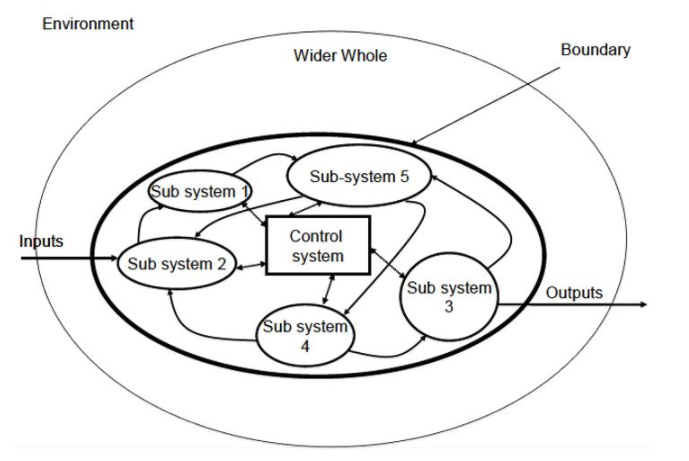Systems theory
Big Idea
Systems thinking is not a tool or concept but an interdisciplinary field, which receives contributions from various disciplines,from biology to sociology. As with many other academic disciplines, not all authors have similar views on what constitutes a system or systems thinking. For us systems are not pre-defined and out there to be discovered, rather it is a way of thinking about the world, as a web of interconnected parts. These parts can be anything, elements, people,concepts, variables, etc. For example, your bachelor course can be seen as a set of interrelated courses, your mobile phone as a set of interrelated hardware and software, a theory as a set of interrelated variables, and so it goes.
When thinking in terms of systems, it us useful to consider its main features:
Worldview: this related to our ontology (what we believe to exist), yet in more pragmatic terms, we can consider it what perspective are we taking, what are we interested in
Boundary: The coherence enables a boundary to be drawn around the entity distinguishing the elements inside from the outside (the environment). The boundaries are to be defined (agreed upon), as in reality there are no boundaries (somewhere in infinity)
Hierarchy: A system can be broken down into subsystems, which subsystem can be broken down again into smaller parts, which can be broken down again and again and again, so many times as it is meaningful. In man-made systems (like in projects), we are the ones to define how the structure will look like
Black box: it is not necessary to know the internal processes inside this box, only input and output are important conceive systems consisting of sub-systems without having to analyze the internal structures of these sub-systems
Mechanisms of control: enables the entity to keep its identity
Dynamic: a system changes in time
Inputs and outputs: things that cross the boundary (of systems but also sub-systems) (based on Checkland, 1981, p. 101)
Application
This worldview is quite useful to address the complexity of projects. For example, we can analyse project scope or project stakeholders (see Chapter People) by using the five elements suggested by Checkland. This is useful mostly in the early phases of the project, but can also be used as the project develops and is further detailed.
Limitations
Overall, systems theory has been criticized for being too deterministic, and give limited attention to people. Individuals become ‘dots’ in the system.
